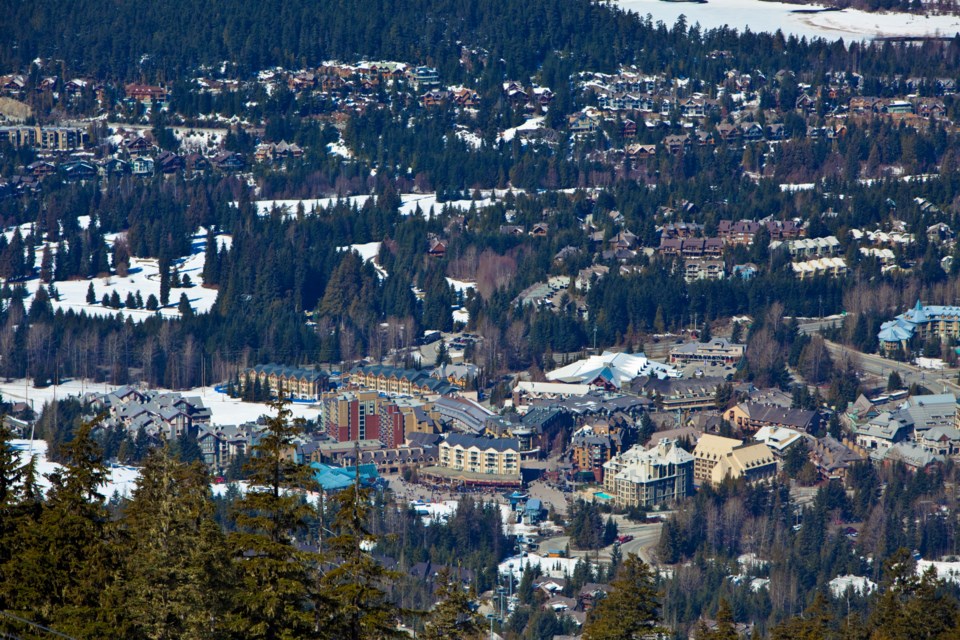Whistler’s mayor and council received a final vulnerable populations housing needs assessment report on March 19, but that’s not to say immediate action is pending.
The report and its findings are intended to inform the municipality on the existing supply of, and community need for, emergency, transitional, supportive, and non-market rental housing.
The report, which will also serve as an input to the Resort Municipality of Whistler’s (RMOW) long-term housing strategy, focused on four housing types that tend to support the community’s most vulnerable.
What the report didn’t look at was market rental housing, affordable home ownership, market home ownership, assisted living, or long-term care, staff noted.
In a nod to the informational nature of the report, planner Joanna Rees also added that, “while this project provides an assessment of Whistler’s vulnerable populations housing needs, it should be noted it does not attempt to provide solutions to meeting those needs.”
Carried out by RMOW staff and funded through Vancouver Coastal Health, the report acts as a supplement to the 2022 Whistler Housing Needs report, which identified a need in the community for housing for low-income and vulnerable populations.
Informed by community and stakeholder input with 19 community groups represented, on a high level, the latest report found households are feeling financial pressures through increasing rental rates, inflation, rising costs of food, and increased costs in childcare.
“With less disposable income, more people are resorting to social services and community supports, including the food bank,” said manager of planning and policy Courtney Beaubien in speaking to the report.
The staff presentation to council also noted key demographics of need are women and children, youth, people with disabilities, Indigenous households, recent immigrant households, and older adults.
Digging into the four types of housing considered, “emergency housing” was found to consist of stock only offered by the Whistler Community Services Society (WCSS) in the form of its emergency weather response shelter, and emergency housing the WCSS organized in tourist accommodation on a case-by-case basis. There is no year-round emergency housing in Whistler.
With a small amount of services available, the report found Whistler needs at least six year-round beds dedicated to emergency housing, and by 2033 that number will be at least eight.
The report also noted Whistler has no transitional or safe housing for people fleeing violence or who require immediate accommodation. There is one “second-stage” housing unit operated by PearlSpace, where people experiencing or at risk of violence can live independently for six to 18 months.
“[T]here are limited options for those that cannot wait for housing,” Rees said. Whistler needs a safe home, she added, and by 2033, the community will need more intermediate housing options.
For the third category, supportive housing, Whistler again has minimal options, and none for adults, older adults or people with disabilities. There is one youth supportive housing program operated by Zero Ceiling.
Supportive housing is housing for those who require assistance to live independent lives.
The Zero Ceiling program has 13 people on the waitlist, while comparable communities require about 20 beds worth of supportive housing for older demographics. The report found Whistler needs at least 22 beds for youth, and 20 beds for all other demographics—numbers which will rise by 2033 to 28 for youth, and 26 for adults, older adults and people with disabilities.
Finally, non-market rental housing is for those with a low to moderate income. Non-market rentals are the most well-developed segment under the report, with 347 units through the Whistler Housing Authority and Whistler Valley Housing Society, while there are 1,038 units throughout Whistler governed by housing agreements to keep rents low, and there are estimated to be 45 households in the private rental market that receive rent supplements through BC Housing.
Staff reported that while the WHA is reputable and does well by the community, its strict eligibility requirements are a major hurdle. Long wait-list times also take the WHA off the list of solutions for those in emergency housing situations.
The full report with a breakdown of the four categories and considerations can be read on the RMOW website.
In summarizing lessons learned, staff said the report found housing is complex, and no one group can solve the challenges facing Whistler, which require more partnerships and data collection in key areas to better inform policy decision-making. Finally, staff recommended the report should be revisited “in a maximum of five years.”




